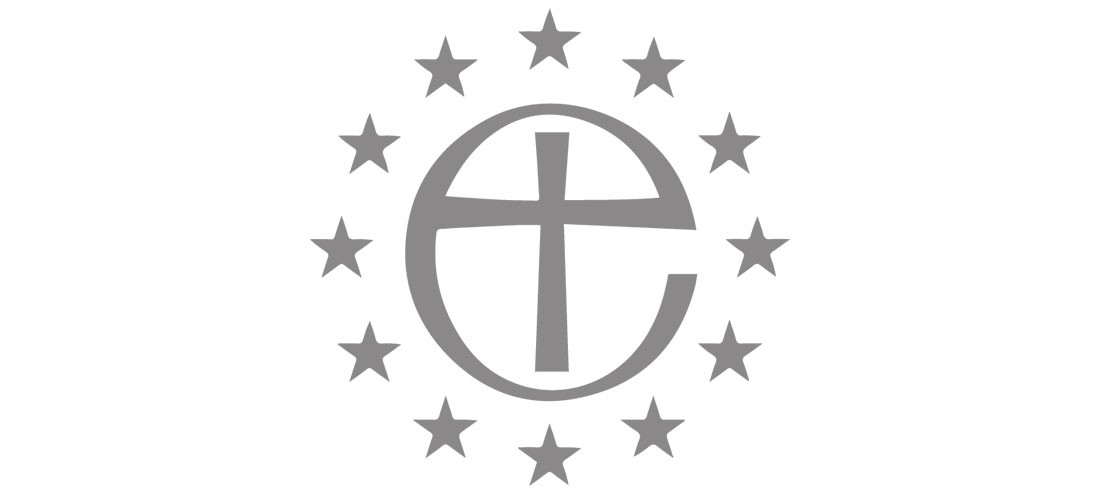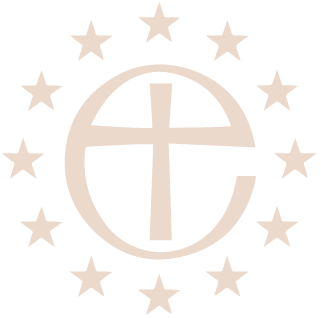
St. Michael and All Angels (Sept 29th) 2020. Preached for the Anglican congregation in Thessaloniki.
Revd. Canon Leonard Doolan
Today the church in the West, Anglican and Catholic, celebrates the feast of St. Michael and All Angels. The book of Revelation narrates the action of Michael in Heaven, as he slays the demon dragon. From this story the hagiography of St. Michael emerges, though we must always give to Christ the priority of the overthrow of evil and death.
The depiction of holy men and women slaying the dragon is commonplace in Christian story telling and iconography. Mediaeval cartographers were willing to conceal their ignorance of some areas of local geography, not by saying beyond this point we don’t know, but rather, beyond this point ‘here be dragons’.
Michael is the biblical warrior saint that we celebrate today, but our tradition records many. There is a rich tradition of saints on horseback slaying the evil dragon, illustrating the subjugation of the embodiment of evil, or the devil, to the power and victory of the Christian victor. There is St. George; and of course, here in Thessaloniki, St. Demetrios. I said earlier there were Christian holy men and women depicted in this way. When the English Crusaders returned from the Holy Land, they took with them the cult of St. Margaret of Antioch, after whom a goodly number of English churches are named. My own church when I was a priest in Crawley was St. Margaret of Antioch.
When I first arrived in Athens I was given a book to read that has been translated by a friend of mine, Fr. John Raffan, a Scottish born Greek Orthodox priest who ministers between venues in Athens and in Crete. He has translated a work written by Lambros Kamperidis who wrote about the work of the earth- coloured icon art of Peris Leremiadis. Although these are depictions principally of George, I want to share some of the words of this book as translated by Fr. John.
‘The ancient world of idols teems with dragons and demons. These monsters are not confined only to the margins of the Book of Kells or the Lindisfarne Gospels. They are captured as engraved dragons on the baptismal fonts of the Nordic world, etched on stone crosses of the ninth century on the Isle of Man and carved on the portals of the stave churches of Norway and Denmark…’ (Lambros Kamperidis, The Rider The Steed The dragon. Trans John Raffan Publ. Denise Harvey p19)
So this image of Michael slaying the beast in Revelation 12 is powerful, and transcends many ancient cultures and religious story telling. The picture is that of good overcoming evil, the foundation of all good religion, and the expectation of most movies and worthwhile novels. In a culture where we are more infected with the findings of science than the imaginings of religion, it is difficult, perhaps, to take the idea of a holy person slaying a dragon with any seriousness.
Yet, this theme is as necessary in our own time as it was in the time when the dualism of heaven and hell was sharper and more plausible; as necessary in a world where we recognize the demons that prowl around like a roaring lion, seeking whom he may devour, but which is now couched in the language of the new priesthood, psychologists. The devil, dressed in the metaphorical clothes of dragons and serpents, is as real in our own lives as he has ever been, and maybe all the more powerful because of our intellectual desire not to give such a mediaeval name to the evils that dominate individuals and societies.
If there is no sin, no evil, no Satan, if we call him by a name, then there is nothing for Christ to overcome on the cross and in the power of his resurrection. We have each deep knowledge of how the Evil One has made his home in us, and either the home can be made comfortable for him, or it can be a most discomforting inhabitant. We also know the sheer will power and physical and emotional energy that is needed to remove him from his dwelling place. Like the cuckoo making his nesting place which others have toiled to build, and whose offspring bit by bit kicks out what is natural, so the Evil one plants in us those human attributes that need to be touched and redeemed by Christ. I have no particular desire to equate the cuckoo with Satan, but it seems a rather brutal breed of bird, with some fairly nasty results to its social behaviour.
The children of evil, in our human condition, present themselves in many guises – social and personal chaos, indifference to poverty, neglect of the weak, purposelessness, wreckless disregard for human life, and ultimately blindness to the glory of God. There are many other examples that each of us could name.
Our OT reading this morning gives us an image of a ladder – the ladder in the dream of Jacob. The place where he has this vision of ascending to be with God he called Bethel – the House of God. On this ladder he sees the angels of God ascending and descending, illustrating a living and active relationship between heaven and earth, both of which we say in the Nicene Creed each Sunday are of God’s creation. Some of us will be familiar with the board game called ‘snakes and ladders’. We throw a dice and we move the counters accordingly. If we land on a ladder we can climb to the higher level, but if we land on the snake – in today’s context maybe the dragon or serpent – we come slipping downwards. Jacob’s vision is more of the up and down escalators that we might be familiar with in Marks and Spencers, or in a Hondos Centre.
Jesus is referring to the ladder image of Jacob in his encounter with Nathaniel, where Jesus too speaks of the angels of God travelling with liberty between one world and the next. Such ease of travel – pano and kato- is only possible when the Evil One is expelled from the whole equation. In Revelation we are told that it is by the blood of the Lamb that Michael is able to be victorious. Our hero, if you like, is not Michael, but the Christ, the Messiah of God.
African Anglicans will still be familiar with language of being washed in the blood of the Lamb, and with the image of nailing Satan to the wall. Neither are very enlightened phrases by today’s modern insights into life, but the modern insights into life are tempted so often to admit to harsh human realities, and the denial of the return journey home to bask once again in the glory of the Father, when we once again know what it is to be ‘at home’.
St. Michael, and this feast, remind us of neglected spiritual realities, without which we have but a partial view of the hidden things that only the presence of Christ can bring to light.
In St. Gregory the Great’s Moralia in Job, (Bk7,36) St. Gregory says, ‘For what is denoted by the dragons save malice? Therefore the dragon dwells in the perverted mind… in that there lurking malice is cunningly covered.’


No Comments